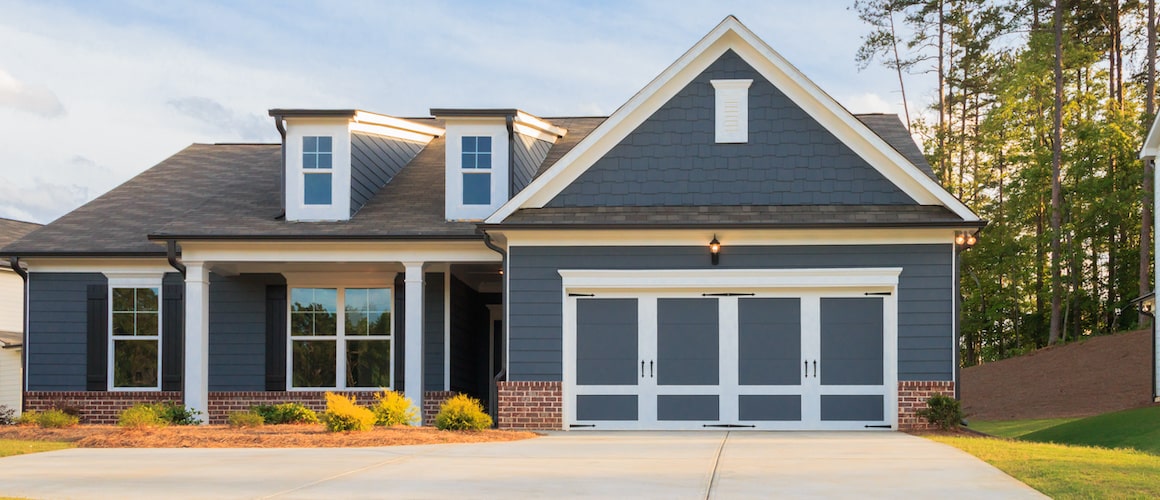The Deep Emotional Connection: Why 74% of American Homeowners Find True Sanctuary at Home
The concept of "home" extends far beyond four walls and a roof. In an era where remote work has redefined our relationship with personal spaces, American homeowners are discovering profound emotional connections to their properties that transcend traditional real estate values. Recent comprehensive research reveals that an overwhelming 74% of U.S. homeowners would rather be at home than anywhere else—a statistic that illuminates the deep psychological sanctuary modern homes provide.
This emotional attachment to homeownership represents more than mere preference; it reflects a fundamental shift in how Americans view their living spaces. With housing costs reaching unprecedented levels and market conditions challenging potential buyers, those who have achieved homeownership are finding their properties serve as anchors of identity, stability, and personal expression in an increasingly uncertain world.
The Psychology Behind Home as Personal Identity
The emotional landscape of homeownership reveals fascinating insights into human psychology and belonging. According to recent survey data, 69% of homeowners consider their residence a direct reflection of their identity—a percentage that speaks to the intimate relationship between personal space and self-expression.
This connection manifests in multiple dimensions of daily life. Research indicates that 68% of homeowners identify their residence as the exclusive location where they can truly relax, while an identical percentage considers it the only place guaranteeing quality sleep. These statistics underscore how homes function as psychological sanctuaries, providing irreplaceable comfort that commercial spaces or temporary accommodations cannot replicate.
The sense of belonging extends beyond the physical structure to encompass neighborhood connections. Approximately 64% of homeowners report feeling genuine community belonging within their local area, suggesting that homeownership creates both individual sanctuary and collective social bonds. This dual benefit—personal retreat and community integration—helps explain why 70% of respondents are more emotionally attached to their home than they anticipated.
Modern homeowners are discovering that their properties serve multifaceted roles: private retreat, creative expression canvas, family gathering place, and professional workspace. The pandemic's influence on remote work patterns has intensified these connections, as homes have evolved into comprehensive lifestyle hubs rather than merely evening and weekend destinations.
Creative Financing Strategies: How Americans Fund Their Dreams
The path to homeownership in 2025 requires unprecedented creativity and financial resourcefulness. With traditional saving methods proving insufficient for many prospective buyers, Americans are employing diverse strategies to accumulate down payment funds, revealing remarkable determination to achieve homeownership despite economic challenges.
Direct paycheck savings remains the foundation strategy, with 54% of recent homebuyers utilizing this traditional approach. However, the data reveals significant generational differences in supplementary methods. Among Gen Z and millennial buyers—demographics facing the steepest affordability challenges—innovative approaches are becoming standard practice.
Nearly one in five young homebuyers (18%) work secondary employment specifically to accelerate down payment accumulation. This statistic represents more than financial necessity; it demonstrates the prioritization of homeownership within life goal hierarchies. These additional income streams range from freelance work and gig economy participation to part-time retail positions and entrepreneurial ventures.
Family financial support plays an increasingly crucial role, with 21% of young buyers receiving cash gifts from relatives. This trend reflects both intergenerational wealth transfer patterns and family recognition of homeownership's long-term benefits. The practice extends beyond simple monetary gifts to include strategic family lending arrangements and shared equity investments.
Investment liquidation represents another significant trend, with 20% of young buyers selling stock holdings to fund down payments. This approach requires careful consideration of market timing, tax implications, and portfolio diversification, yet many buyers consider homeownership a superior long-term investment compared to traditional securities.
Generational Divide: Different Paths to the Same Goal
The homeownership journey varies dramatically across generational lines, reflecting distinct economic contexts, life stages, and financial resources. These differences illuminate broader societal trends while highlighting universal homeownership aspirations across age groups.
Baby boomers, benefiting from decades of property appreciation and career advancement, demonstrate the highest homeownership rates at 80%. Their down payment strategies reflect established wealth accumulation, with 36% utilizing proceeds from previous home sales—nearly double the rate of younger generations. This advantage compounds over time, as equity from earlier purchases facilitates property upgrades or investment expansion.
Generation X occupies a middle position, with 73% achieving homeownership through balanced approaches combining traditional savings (56%) with strategic property sales (25%). This generation experienced varying economic conditions throughout their homebuying years, developing adaptable financial strategies that blend conservative and opportunistic elements.
Millennials and Gen Z face distinctly different challenges, requiring innovative approaches to overcome affordability barriers. Despite comprising the largest homebuying demographic, only 55% of millennials and 26% of Gen Z have achieved ownership. Their strategies reflect adaptation to modern economic realities: higher reliance on family assistance, investment liquidation, and alternative living arrangements to accelerate savings.
The cryptocurrency factor emerges as a uniquely modern element, with 13% of young buyers liquidating digital assets for down payments compared to virtually zero among older generations. This trend reflects both technological adoption patterns and willingness to convert speculative investments into tangible real estate assets.
The Financial Foundation: Building Generational Wealth Through Real Estate
Homeownership's emotional benefits intertwine closely with its financial advantages, creating compelling reasons for Americans to pursue property ownership despite current market challenges. Real estate continues serving as a primary wealth-building vehicle, offering advantages that extend far beyond monthly payment stability.
Property appreciation historically outpaces inflation, providing homeowners with growing equity that functions as forced savings. This appreciation occurs regardless of active management, distinguishing real estate from investments requiring ongoing attention or expertise. Many homeowners discover their property's value growth exceeded their initial down payment within several years, effectively providing positive return on investment while enjoying occupancy benefits.
Tax advantages further enhance homeownership's financial appeal. Mortgage interest deductions, property tax deductions, and capital gains exclusions for primary residences create substantial annual savings that renters cannot access. These benefits effectively reduce homeownership costs while providing government-subsidized wealth building opportunities.
The stability factor cannot be understated in volatile economic environments. Fixed-rate mortgages protect homeowners from rent increases, providing predictable housing costs that facilitate long-term financial planning. This stability becomes particularly valuable during inflationary periods when rental costs typically rise faster than fixed mortgage payments.
Inheritance planning represents another crucial advantage, as real estate provides tangible assets for generational wealth transfer. Property ownership enables families to build lasting financial legacies while providing immediate housing security, creating win-win scenarios across multiple generations.
Current Market Realities and Future Outlook
The 2025 homeownership landscape reflects complex interactions between emotional desires, financial capabilities, and market conditions. Current homeownership rates of 65.1% represent slight declines from recent peaks, indicating affordability challenges that prevent many Americans from achieving their housing goals.
Regional variations add complexity to national statistics, with homeownership rates varying significantly across geographic areas. Rural regions typically demonstrate higher ownership percentages due to lower property costs, while urban centers present affordability challenges that limit access for middle-income families.
Demographic disparities remain pronounced, with substantial gaps across racial and ethnic lines. White Americans achieve 72% homeownership rates compared to 45% among Black Americans—a difference reflecting historical discrimination, wealth gaps, and ongoing systemic barriers. These disparities highlight the need for targeted programs and policy interventions to expand homeownership access.
The rental market's evolution influences homeownership decisions, as high rental costs in many markets make mortgage payments competitive with monthly rent expenses. This convergence eliminates traditional cost advantages of renting while highlighting homeownership's equity-building benefits.
Technology integration continues reshaping the homebuying process, with virtual tours, digital documentation, and online mortgage applications streamlining transactions. These innovations particularly benefit younger buyers comfortable with digital processes, potentially accelerating their path to homeownership despite financial challenges.
Key Insights: Understanding the Modern Homeownership Experience
Why do so many homeowners feel emotionally attached to their properties?
Homeownership provides unique psychological benefits that rental properties cannot replicate. The ability to modify spaces, create permanent memories, and establish long-term community connections develops deep emotional bonds. Additionally, the financial investment creates psychological ownership that extends beyond legal title, making homes feel like extensions of personal identity rather than temporary accommodations.
How are young buyers overcoming down payment challenges?
Modern young buyers employ diverse strategies including secondary employment (18%), family gifts (21%), investment liquidation (20%), and cryptocurrency sales (13%). Many also utilize cost-reduction methods like living with family temporarily (18%) and contributing less to retirement savings (11%) to accelerate down payment accumulation.
What role does family assistance play in modern homebuying?
Family assistance has become crucial for younger generations, with 21% of Gen Z and millennial buyers receiving cash gifts compared to only 7% of baby boomers. This trend reflects both wealth transfer patterns and family recognition that homeownership remains the primary path to long-term financial stability for younger Americans.
How significant are the wealth-building aspects of homeownership?
Real estate continues serving as the primary wealth-building vehicle for most American families. Property appreciation, tax advantages, mortgage principal reduction, and inflation protection create multiple wealth-building mechanisms that renters cannot access. The forced savings aspect of mortgage payments builds equity automatically while providing housing security.
What demographic groups face the greatest homeownership challenges?
Significant disparities exist across racial lines, with Black Americans achieving only 45% homeownership compared to 72% for white Americans. Age also creates barriers, with only 26% of Gen Z achieving homeownership compared to 80% of baby boomers. These gaps reflect income disparities, credit access differences, and varying family wealth levels.
How has remote work affected homeownership desires?
Remote work has intensified emotional connections to homes by transforming them into comprehensive lifestyle hubs. Properties now serve as offices, recreational spaces, and social centers, increasing their functional value and emotional significance. Many homeowners report deeper appreciation for their spaces after spending more time at home during the pandemic transition period.












